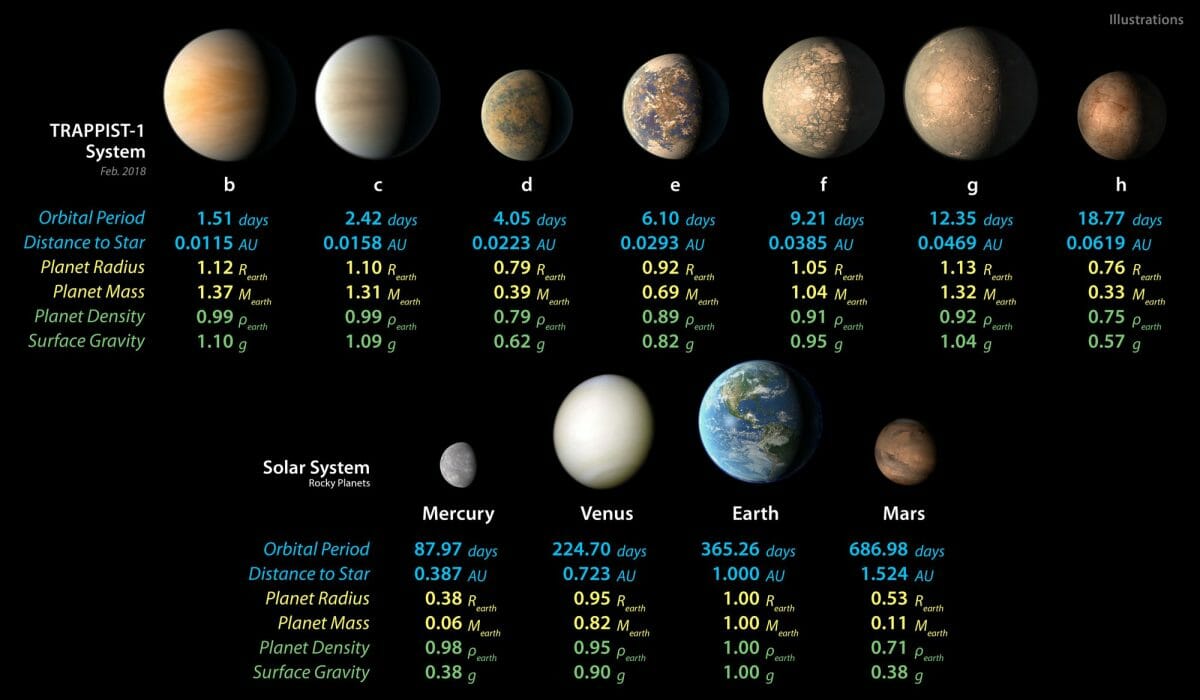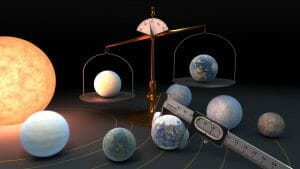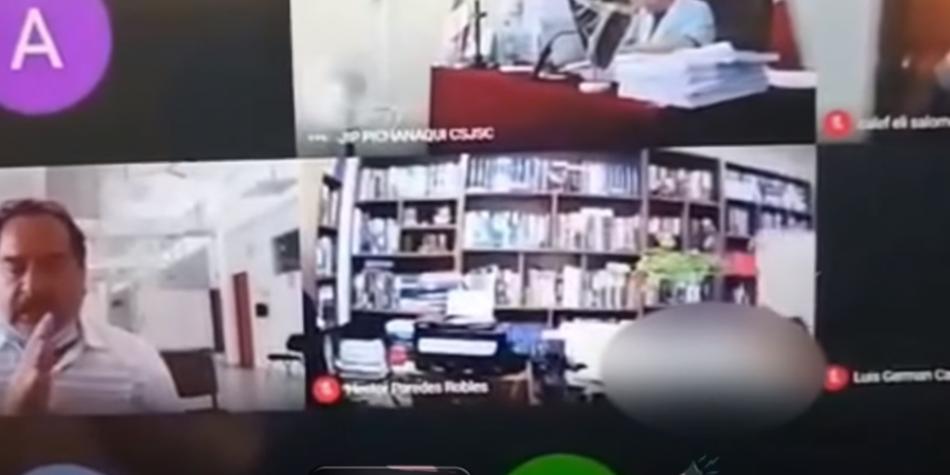Image diagram showing a study comparing the seven exoplanets orbiting the red dwarf TRAPPIST-1 (far left) with the Earth (right side of the balance) (Credit: NASA / JPL-Caltech)
University of WashingtonEric Agol氏Their research group is a star about 40 light-years away in the direction of “Aquarius”.Seven extrasolar planets orbiting “TRAPPIST-1”We announced the latest research results on.According to the research group, TRAPPIST-1 exoplanets are different from the solar system, which has four rocky planets and four gas-rich planets.Rock planets with almost the same composition for all sevenIt seems like.
■ The average density of the seven planets, which is more accurate than before, was almost the same.
TRAPPIST-1 has a small diameter of about 11% of the sun and a mass of about 8% of the sun.Red dwarfAnd the telescope on the ground and the infrared space telescope of NASA“Spitzer”A total of seven exoplanets have been found by observations (end of operation in January 2020). This time, the research group used TRAPPIST-1 observation data for more than 1000 hours obtained by Spitzer’s observation before the end of operation.The most accurate average density ever for each of the seven exoplanetsWas calculated.
Calculated from diameter and mass to know the properties of exoplanetsAverage density is important informationis. For exampleA ball of the same size that looks exactly like itLet’s say you have two.One of the materialswoodAnd the other oneironis.Even if you can’t tell the difference between the ingredients just by looking at them, take them with you.Which is heavierYou can see, if you calculate the average density from the diameter and massEstimate materialYou can also.
The same is true for exoplanets, and if the average density is known, that planet willWhether it resembles Earth or JupiterTo distinguishWhat kind of composition can be consideredYou will be able to estimate. When the research group analyzed by subtracting the change in density due to the weight of the planet,The average densities of all seven exoplanets orbiting TRAPPIST-1 are about the sameIt is said that it became clear that.

Comparison table of 7 planets of TRAPPIST-1 (upper) and 4 rocky planets of the solar system (lower). The numerical values are in the order of revolution period, distance from the main star, radius, mass, average density, and surface gravity from the top. The unit is “day” for the orbital period, “astronomical unit” for the distance from the main star, and “ratio when the earth is 1” for radius / mass / average density / surface gravity (Credit: NASA / JPL-Caltech)
■ The composition of 7 planets seems to be different from that of the earth
On the other hand, the average density of the seven TRAPPIST-1 planets is about 8 percent lower than that of the Earth.Composition different from the earthIs believed to have.One of the possibilitiesDifference in the amount of ironSo, while the iron of the earth occupies about 32% of the whole, it is as small as about 21% on the 7 planets of TRAPPIST-1, and it is in the central part.The size of the core made of iron is relatively smallIt is said that it can be considered.
Another possibilityMars surfaceReddish that exists iniron oxideLike (rust), a large amount of ironExists as iron oxide combined with oxygenIt is also possible that the average density is low.To explain low density with iron oxide aloneAll iron oxidizes in the absence of iron nucleiIt seems that it has to be done, but Agol combined the two hypotheses.Highly likely to be “generally low in iron and partially oxidized”It is said.
It is also less dense than iron oxidewaterIs also being investigated as a liquid on the surface of the earth at a higher rate than the Earth (about 5% of the total mass).For each of the 7 planetsIt is unlikely that there will be an amount of water that is about the same in average density.As Agol thinks water is unlikely to be the main reason.
Of the University of Zurich who participated in this studyCaroline Dorn“The night sky is full of planets, but less than 30 years have passed since humans began to unravel the mystery. TRAPPIST-1, which allows you to learn about the diversity of rocky planets in one planetary system, is a fascinating research subject. “.

A diagram showing the inside of TRAPPIST-1’s seven planets. From the left, “no core”, “mantle and small core”, “mantle covered with deep sea and large core (only 4 outer planets)” (Credit: NASA / JPL-Caltech)
Image Credit: NASA/JPL-Caltech
Source: NASA / University of Bern
Sentence / Takehiro Matsumura
Related article link (external site)
How about a special “heart mark from Mars” for Valentine’s Day?
Another face of the sun captured by SDO
The bright and beautiful appearance of “NGC 346”
 —
—

